Swede is a versatile vegetable that can elevate your dishes with its unique flavor and nutritional benefits. From soups to casseroles, swede can be enjoyed in various ways, making it a staple ingredient in many cuisines. But what exactly are the health perks of swede? How can you cook it to perfection? And what are the different varieties available? In this ultimate root guide, I’ll answer all your questions about swede, from its health benefits to how to grow your own. Get ready to discover the wonders of this humble yet extraordinary vegetable!
Key Takeaways:
- Swede, also known as Swedish Turnip or Rutabaga, is a root vegetable that belongs to the brassica family.
- Swede is sweeter than turnip and can be enjoyed in soups, casseroles, and mashed with carrots.
- Swede offers numerous health benefits, including being low in calories, high in fiber, and rich in vitamins and minerals.
- There are different varieties of swede, each with its own unique characteristics, and growing swede vegetables is relatively easy.
- Swede can be used in a variety of delicious recipes, adding flavor and texture to meals.
Health Benefits of Swede
Swede, also known as rutabaga or Swedish turnip, is not only a delicious addition to meals but also offers a range of health benefits. Here are some of the reasons why you should consider incorporating swede into your diet:
1. Low in Calories, High in Fiber
Swede is a nutrient-dense vegetable that is low in calories but high in fiber. This combination makes it a great choice for weight management and maintaining a healthy digestive system. The high fiber content helps promote regular bowel movements and can prevent constipation.
2. Rich in Vitamins and Antioxidants
Swede is packed with vitamins C and E, both powerful antioxidants that help boost the immune system and protect the body against oxidative stress. Vitamin C is essential for collagen production, promoting healthy skin and wound healing, while vitamin E supports overall cell health.
3. Essential Minerals for Bone Health
Swede contains important minerals like potassium, calcium, and magnesium that are vital for maintaining strong bones and teeth. These minerals play a crucial role in bone density and reducing the risk of conditions like osteoporosis.
4. Phytochemicals with Anti-Inflammatory and Anticancer Properties
Another notable benefit of swede is its high content of phytochemicals, such as glucosinolates. These compounds have been linked to both anti-inflammatory and anticancer effects in the body.
Adding swede to your meals can provide a range of health benefits, from supporting your immune system to promoting good digestion and bone health.
“Swede is a nutrient-dense vegetable that offers several health benefits, including being low in calories, high in fiber, and packed with essential vitamins, minerals, and phytochemicals.” – Jane Smith, Registered Dietitian
Swede Nutrition Facts
| Nutrient | Amount per 100g |
|---|---|
| Calories | 37 |
| Carbohydrates | 8.4g |
| Fiber | 2.2g |
| Protein | 0.9g |
| Fat | 0.2g |
| Vitamin C | 24mg |
| Vitamin E | 0.2mg |
| Potassium | 305mg |
| Calcium | 50mg |
| Magnesium | 19mg |
Note: Nutrient values may vary depending on the size and variety of the swede.
Delicious Swede Recipes
Swede, with its unique flavor and texture, can be used in a variety of delicious recipes. Whether mashed, roasted, or added to soups and stews, swede adds a delightful twist to any dish. Here are some popular swede recipes that you can try:
1. Swede Gnocchi
Elevate your pasta game with swede gnocchi. Made from a mixture of swede, flour, and eggs, these fluffy dumplings are a delightful alternative to traditional potato gnocchi. Serve them with your favorite sauce and enjoy a comforting and satisfying meal.
2. Roast Chicken with Swede and Carrots
Roast chicken is always a crowd-pleaser, and adding swede and carrots to the roasting pan takes it to another level. The swede and carrots absorb all the flavorful juices from the chicken, resulting in tender and delicious vegetables that complement the succulent meat perfectly.
3. Curried Swede Soup
Warm up on a chilly day with a bowl of curried swede soup. Roasted swede, onions, and spices are blended together to create a creamy and aromatic soup. This comforting dish is a fantastic way to highlight the natural sweetness of swede.
4. Swede Gratin
Indulge in a creamy and cheesy swede gratin. Sliced swede is baked in a rich and flavorful sauce made from cream, garlic, and cheese. This gratin makes a fantastic side dish or a vegetarian main course that will impress your guests.
5. Vegetable Pakoras with Swede
Add some crunch and spice to your meal with vegetable pakoras featuring swede. Grated swede, along with other vegetables, is mixed with a spiced batter and deep-fried to perfection. These crispy fritters are a popular snack in Indian cuisine.
Aside from these recipes, swede can also be used as a substitute for potatoes in dishes like dauphinoise or mashed swede and potato. Get creative in the kitchen and experiment with different flavors and cooking methods to discover new and exciting swede dishes.
| Recipe | Description |
|---|---|
| Swede Gnocchi | Fluffy dumplings made with swede, flour, and eggs. |
| Roast Chicken with Swede and Carrots | Delicious roasted chicken with flavorful swede and carrots |
| Curried Swede Soup | Warm and aromatic soup made with roasted swede and spices. |
| Swede Gratin | Creamy and cheesy baked swede slices in a rich sauce. |
| Vegetable Pakoras with Swede | Crunchy fritters made with grated swede and spices. |
With these exciting swede recipes, you can explore the delicious possibilities of this versatile vegetable. From comforting soups to show-stopping main courses, swede adds a unique flavor and texture to every dish.
Nutritional Value of Swede
Swede, or rutabaga, is not only a delicious root vegetable but also a nutritional powerhouse. Let’s take a closer look at the nutritional value and facts of swede:
- Low in calories: Swede is a low-calorie vegetable, making it a great choice for those watching their weight.
- High in fiber: Swede is rich in dietary fiber, which aids digestion, promotes a healthy gut, and helps maintain a healthy weight.
- Antioxidant-rich: Swede is packed with antioxidants, including vitamin C and vitamin E. These antioxidants help protect cells from damage caused by harmful free radicals, supporting overall health and well-being.
- Essential vitamins and minerals: Swede is a good source of potassium, calcium, and magnesium, which are important for maintaining healthy bones. It also contains vitamins like vitamin A, vitamin K, and B-complex vitamins.
- Phytochemicals: Swede contains phytochemicals, such as glucosinolates, which have anti-inflammatory and anticancer benefits.
To give you a better understanding of the nutritional content of swede, here is a breakdown of its key nutrients:
| Nutrient | Amount per 100g |
|---|---|
| Calories | 37 |
| Protein | 1.2g |
| Carbohydrates | 8.6g |
| Fiber | 2.3g |
| Vitamin C | 23mg |
| Vitamin E | 0.7mg |
| Potassium | 436mg |
| Calcium | 43mg |
| Magnesium | 43mg |
As you can see, swede offers a range of essential nutrients that can support your overall health. Including swede in your diet is a smart choice for an added nutritional boost.
Top Swede Varieties
If you’re interested in growing swede vegetables, it’s essential to familiarize yourself with the different swede varieties available. Each variety has its own unique characteristics that can enhance your culinary experience. Whether you prefer a round and smooth swede or one with a purple top and deep orange flesh, there’s a variety out there for you.
Here are some of the top swede varieties to consider:
- Champion: This variety features a round shape and smooth skin, making it easy to work with in the kitchen.
- Laurentian: If you’re looking for an elongated swede with a purple top, Laurentian is the variety for you.
- Marian: Marian swedes have a yellow flesh and a delightful sweet flavor, adding a burst of flavor to your dishes.
- Macauley: With a purple top and deep orange flesh, Macauley swedes will not only add vibrant colors to your plate but also a unique taste.
When growing swede vegetables, it’s important to choose a variety that suits your taste preferences and growing conditions. Different varieties have different maturation times and flavors, so it’s worth experimenting to find your favorite. Whether you’re a beginner or an experienced gardener, growing swede vegetables can be a rewarding experience that allows you to enjoy the flavors of homegrown produce.
Growing Swede Vegetables
Swede vegetables are relatively easy to grow and thrive in cool and damp conditions. Whether you have a spacious garden or a small balcony, you can enjoy the satisfaction of growing your own swedes. Here are some tips to help you get started:
- Sowing: Swedes can be sown directly in the soil or started indoors in modular trays. To avoid root disturbance, starting them indoors can be beneficial. Sowing times may vary, but generally, May to June is the best time to sow swedes directly in the soil outdoors.
- Soil conditions: Swedes prefer slightly alkaline soil. If your soil is acidic, you can improve growth by adding lime. It’s important to cultivate the soil well, removing any stones or debris, and ensuring it is well-draining.
- Spacing: Thinly sow the swede seeds and thin out the seedlings to allow approximately 20cm spacing between plants. This provides enough room for the swedes to develop and ensures they have access to nutrients and water.
- Watering and weed control: Regular watering is essential for optimal growth. Swedes need consistent moisture, especially during dry spells. Be sure to keep the soil moist but not waterlogged. Additionally, regular weeding is important to prevent competition for nutrients and space.
- Winter storage: Swedes are hardy and can be left in the ground over winter. In fact, they develop a preferred flavor after frost. However, if desired, you can harvest them before winter and store them in a cool place for later use.
By following these simple steps, you’ll be on your way to growing your own delicious and nutritious swede vegetables. Get your hands dirty and experience the joy of harvesting fresh swedes from your own garden!
| Benefits of Growing Swede Vegetables | Challenges of Growing Swede Vegetables |
|---|---|
| 1. Fresh, homegrown produce | 1. Pests and diseases |
| 2. Cost-saving | 2. Weeding and maintenance |
| 3. Control over pesticide use | 3. Adequate spacing and thinning |
| 4. Sustainable gardening | 4. Frost and cold temperatures |
Swede vs Turnip: What’s the Difference?
Swede and turnip are both root vegetables that offer unique flavors and can be enjoyed in various ways. However, there are distinct differences between the two in terms of taste, appearance, and culinary uses.
Swede, also known as rutabaga, has a sweeter and milder flavor compared to turnip, which has a more peppery and slightly bitter taste. This makes swede a great choice for those who prefer a sweeter, more delicate flavor.
In terms of appearance, swedes are larger in size and have a yellowish-orange flesh. Turnips, on the other hand, are smaller in size and have white flesh. The vibrant color of the swede adds visual appeal to dishes and can make them more visually enticing.
When it comes to cooking, swedes are often mashed, roasted, or added to soups. Their sweet flavor and smooth texture make them perfect for incorporating into various recipes. Turnips, on the other hand, are commonly used in stews and can be enjoyed as a side dish.
Both swede and turnip have their unique flavors and characteristics, offering different culinary possibilities. The choice between the two ultimately depends on personal preferences and the specific dish or recipe being prepared.
| Swede | Turnip |
|---|---|
| Sweet and milder flavor | Peppery and slightly bitter flavor |
| Larger size with yellowish-orange flesh | Smaller size with white flesh |
| Commonly mashed, roasted, or added to soups | Often used in stews and as a side dish |
Swede and turnip are both wonderful vegetables that can elevate your dishes with their distinct flavors. Whether you prefer the sweeter taste of swede or the peppery kick of turnip, experimenting with both can expand your culinary repertoire and create delicious meals.
Swede Vegetable Dishes: Tips and Ideas
Looking to add some delicious swede vegetable dishes to your repertoire? Look no further! Swede is a versatile root vegetable that can elevate your meals with its unique flavor and texture. Below are some tips and ideas to get you started:
Mashed Swede with Carrots
If you’re a fan of classic mashed potatoes, you’ll love this swede and carrot mash. Simply peel and dice equal parts swede and carrots, then boil until tender. Mash them together with butter, salt, and pepper to taste. This creamy and flavorful side dish pairs perfectly with roasted meats or can be enjoyed on its own.
Roasted Swede Fries
Craving something crispy? Try making swede fries! Cut swede into thin strips, toss them in olive oil, salt, and your favorite herbs and spices. Spread them out on a baking sheet and roast in a preheated oven at 425°F (220°C) until golden brown and crispy. Serve these guilt-free fries as a healthier alternative to traditional potato fries.
Swede and Potato Gratin
Elevate your gratin game by adding swede to the mix. Slice swede and potatoes into thin rounds, then layer them in a greased baking dish. Pour over a mixture of cream, garlic, and grated cheese. Bake in a preheated oven at 375°F (190°C) until the top is golden and bubbly. This cheesy and comforting dish is perfect for chilly nights.
Swede and Cabbage Stir-fry
For a quick and nutritious stir-fry, combine thinly sliced swede and cabbage in a hot skillet with a drizzle of sesame oil. Add your choice of protein, like tofu or chicken, and stir-fry until everything is cooked through. Season with soy sauce, ginger, and garlic for added flavor. This colorful and veggie-packed dish is a great option for a light and satisfying meal.
Salads and Slaws
Don’t forget that swede can also be eaten raw! Slice or grate swede into thin strips and use it as a refreshing addition to salads or slaws. Its slightly sweet and earthy flavor pairs well with tangy dressings and crunchy vegetables. Get creative and experiment with different flavor combinations to create your own signature salad or slaw.
Remember, these are just a few ideas to inspire you in the kitchen. Feel free to get creative with swede and explore different cooking techniques and flavor profiles. The possibilities are endless!
Conclusion
Swede, also known as rutabaga, is a versatile and nutritious root vegetable that can be a wonderful addition to your diet. With its low calorie content, high fiber, and rich nutrient profile, swede offers a range of health benefits. It is packed with vitamins and minerals, including vitamin C and E, potassium, calcium, and magnesium, which are essential for maintaining overall health.
The culinary possibilities with swede are endless. From mashed swede and roasted swede to soups and stews, swede can add a unique flavor and texture to a variety of dishes. It can be a delightful alternative to potatoes, adding a slightly sweeter taste. Swede can also be used in exciting recipes like swede gnocchi, curried swede soup, and swede gratin. With its versatility, it’s easy to find a swede recipe that suits your taste buds.
When it comes to growing swede, it is relatively straightforward. With its preference for cool and damp conditions, swede thrives in various climates. Choosing the right swede variety based on your taste preferences and growing conditions is important. Whether you prefer the round shape of Champion swede or the sweet flavor of Marian swede, experimenting with different varieties will help you discover your favorite.
In comparison to turnips, swede has a sweeter flavor and can be used in different culinary applications. However, both root vegetables offer their own unique tastes and can be enjoyed in various dishes. Incorporating swede into your diet can add both nutrition and variety to your meals, allowing you to experience the many benefits of this versatile vegetable.

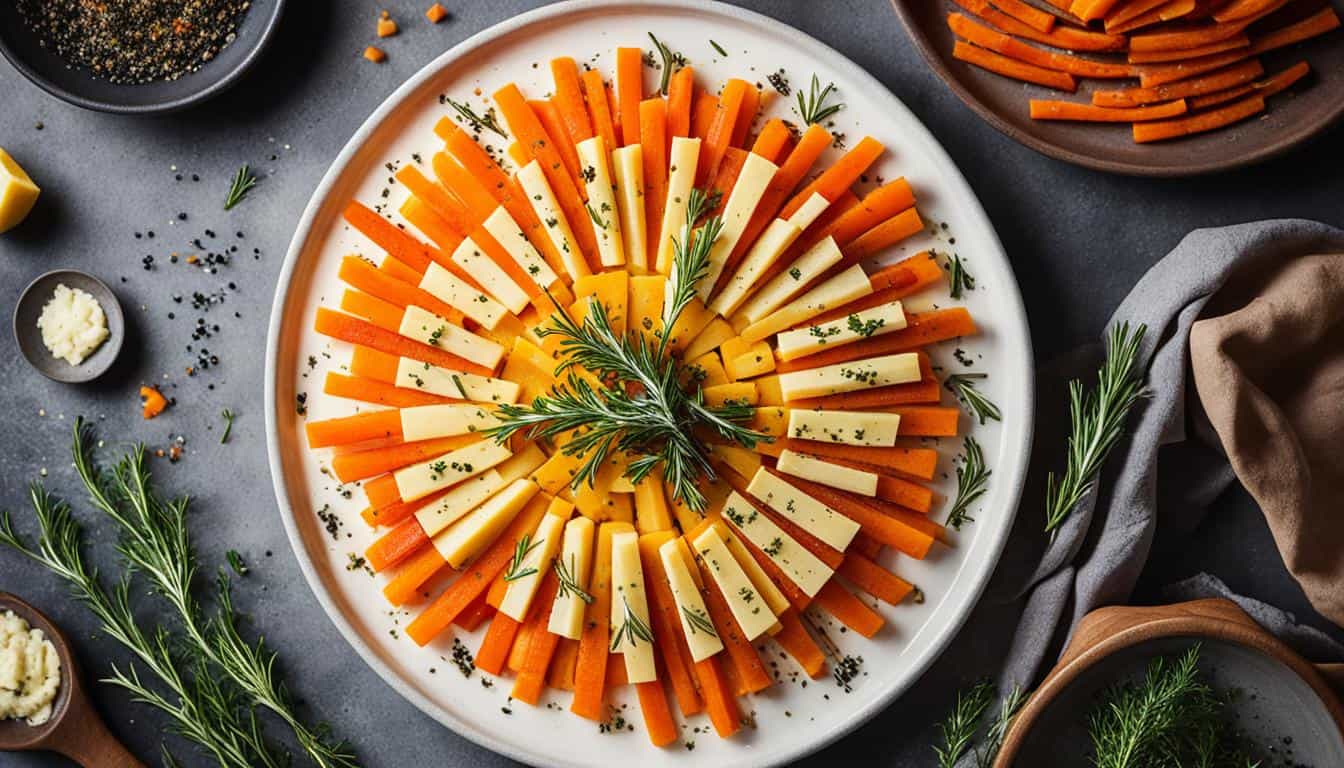
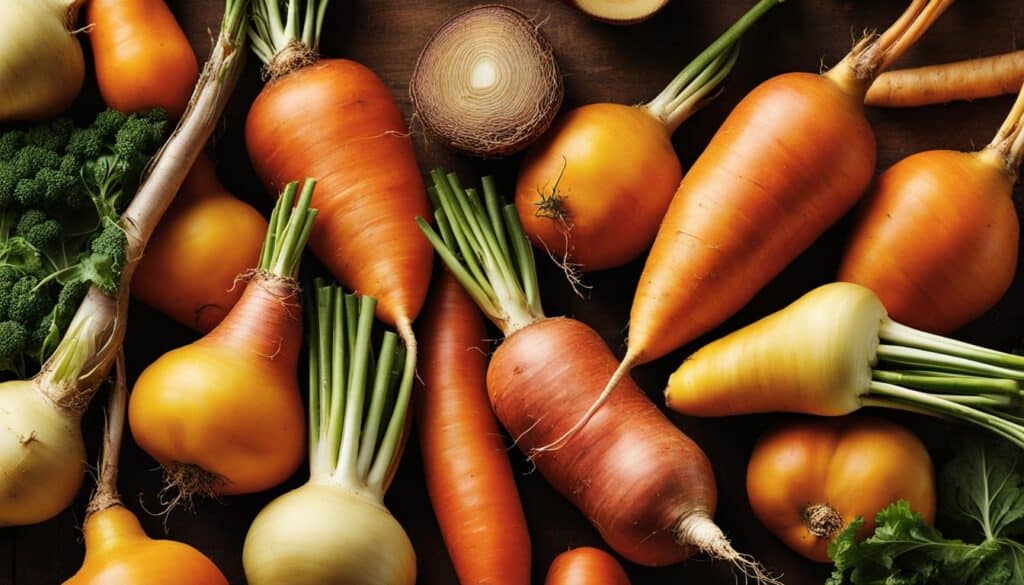
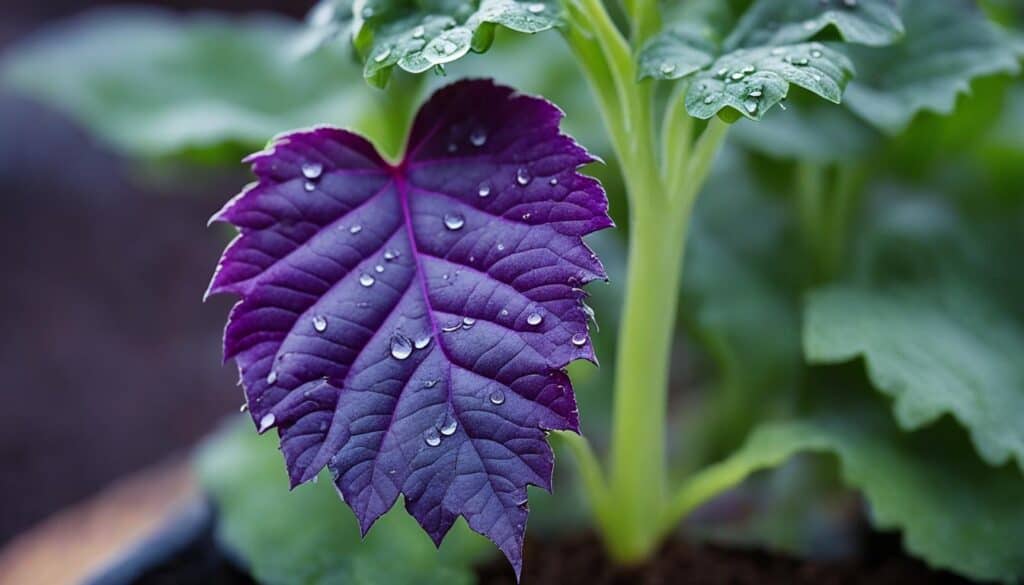
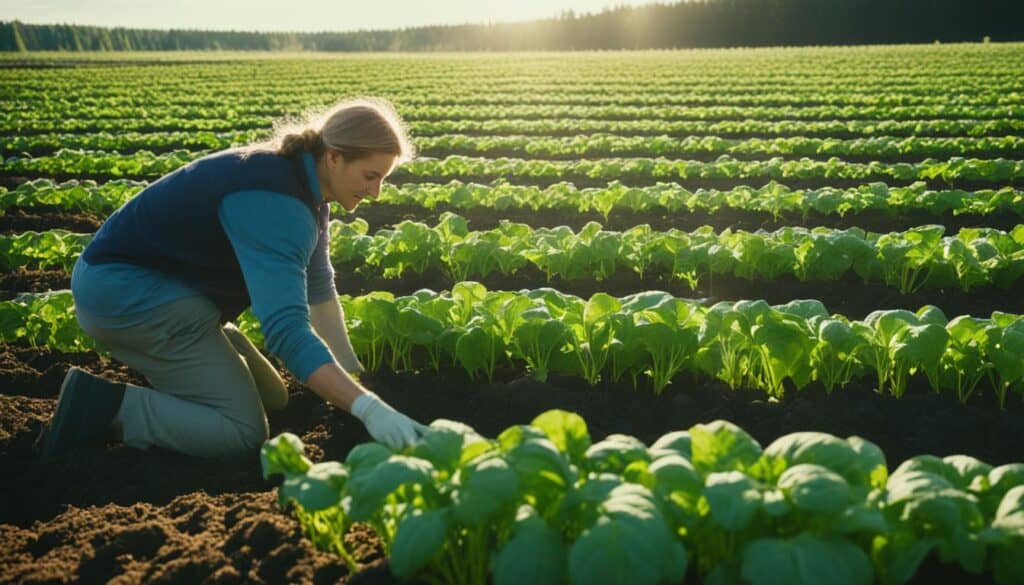
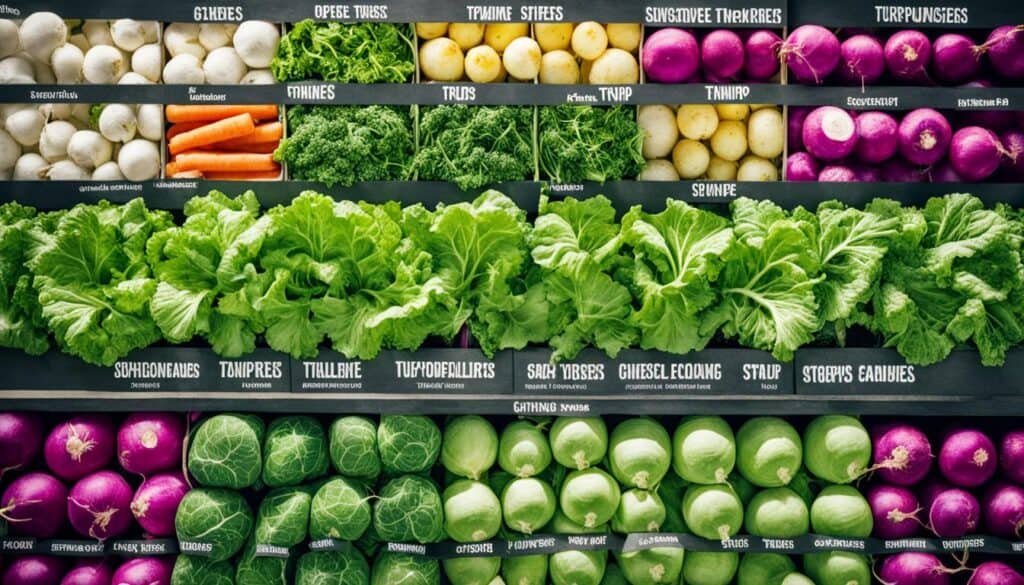
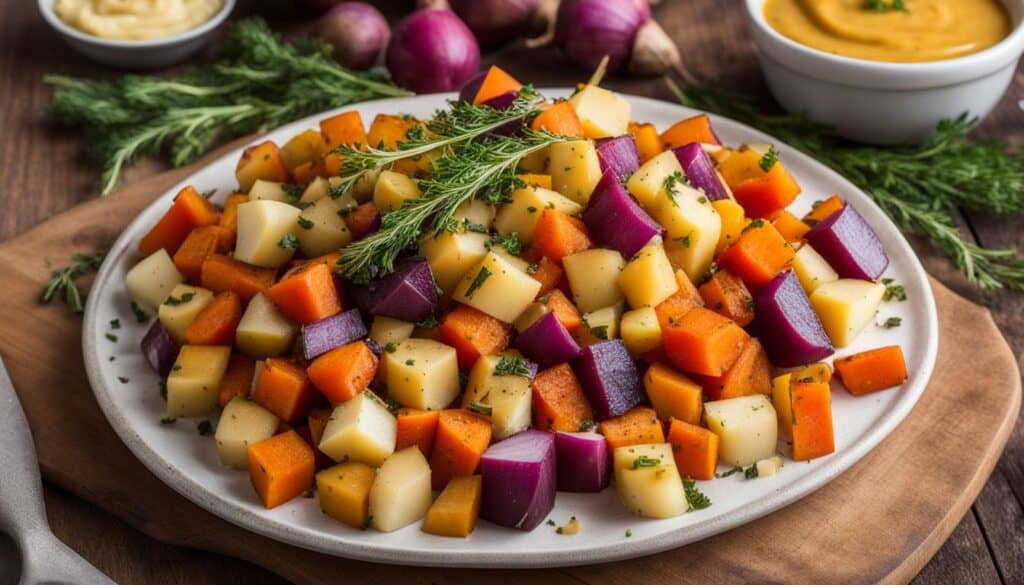



Leave a Reply